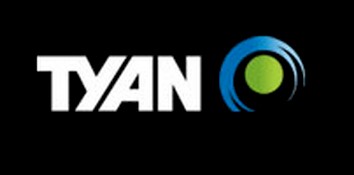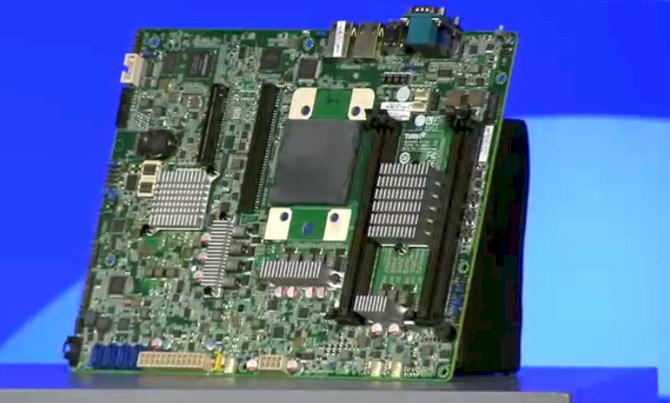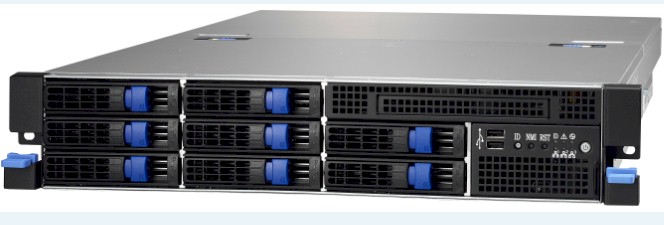Tyan Ships First Non-IBM Power8 Server

The opening up of the Power chip architecture by IBM through the OpenPower Foundation has produced its first tangible, practical result, with Taiwanese motherboard and system maker Tyan getting its first system based on the Power8 processor into the field.
Tyan and Google were showing off their homegrown Power8 motherboards back in April, with Tyan saying it would create a single-socket system that would allow software developers to tune up Linux applications for various data analytics and server consolidation workloads. Google created a two-socket Power8 system board for its internal testing and use and is not, as far as we know, making the board available to outsiders. It is not clear if Tyan will make motherboards and systems with two, four, or more sockets, but if there is customer demand for such machines, presumably Tyan has the capability of doing so. (Both Google and Tyan are founding members, along with Nvidia, Mellanox Technologies, and IBM, of the OpenPower Foundation.
The Tyan system, code-named "Palmetto," is sold under the product number GN70-BP010 and uses the SP010GM2NR single-socket, ATX-style motherboard that Tyan revealed back in April. (The ATX board measures 12 inches by 9.6 inches and is one of several standard sizes used in servers.) Here is what that motherboard looks like, to refresh your memory:
The Palmetto system from Tyan has a 770 watt power supply and the system board takes one of IBM's single-chip module (SCM) Power8 chips, which are code-named "Turismo" according to Tyan. (IBM doesn't usually reveal its Power chip code-names, unlike Intel with its Xeons and Atoms.) This Power8 chip is actually different from the one that Big Blue is using in its entry Power S812, S822, and S824 machines, which have one or two sockets. With these machines, IBM was keen on boosting the number of PCI-Express 3.0 lanes coming out of a single socket, and so it created a six-core variant of the Power8 chip with 24 lanes and put two of them in a single package for a total of 48 lanes. This Power8 dual-chip module, or DCM as IBM calls it, is not used in the new high-end E870 and E880 machines. Those machines, announced this week with from four to sixteen sockets in a single NUMA system, use the Power8 SCM. Whether this one used in the big boxes is literally the same as the Turismo chip Tyan is using is unclear, but it stands to reason that it is.
Tyan is not even close to using up all of the memory and PCI-Express capacity inherent in this chip, and it looks like Tyan is tweaking the design use normal 240-pin DDR3 main memory running at 1.33 GHz and 1.6 GHz rather than the custom DDR3 modules that IBM is making for its own Power Systems machines. The Power8 chips have a generic memory controller that can support either DDR3 or DDR4 main memory and a high-speed memory bus that links out to a memory buffer and L4 cache controller chip code-named "Centaur." This Centaur chip is what actually speaks DDR3 or DDR4 signaling. The Centaur1 chip used by Tyan is underneath the big aluminum heat sink between the two banks of memory slots on the right side of the SP010 motherboard shown above.
The Power8 processor, minus its heat sink, is to the left of the memory block and a little right of center on the card. The SCM chips from IBM come with eight or ten cores activated and IBM is not yet shipping the full-on twelve-core versions to its own customers, so it seems unlikely that Tyan is getting a twelve-core variant here. (IBM is expected to start shipping the twelve-core chip at an undisclosed clock speed, probably around 4 GHz, in early 2015.) The core count, clock speed, and L3 cache size of the Turismo chip is not known as we go to press; we have a call logged into Tyan back in Taiwan and will bootnote when we get more information.
The small heat sink below the processor is unmarked on the Tyan schematics that came out today when the Palmetto system was announced, but presumably it is a voltage regulator. The board has two PCI-Express 3.0 slots, one x8 and one x16. It is not clear if the x16 slot will be able to support IBM's Coherent Accelerator Processor Interface (CAPI), which allows for adjunct coprocessors attached to a Power8 system to hook into the cache and main memory of the Power8 chips in a single, virtual memory space. Interestingly, the Tyan motherboard has an embedded ExpressLane PEX8718 PCI-Express switch from the PLX Technology unit of Avago Technologies; this is under the big aluminum heatsink on the left side of the motherboard in the picture above. It is a bit of a mystery why Tyan would put a switch there instead of hardcoding the PCI-Express slots to the controllers on the Power8 chip, but it could be that Tyan wants to fan out PCI links in future motherboards and is testing out the idea on this first board. The SP010 motherboard comes with four SATA 3.0 ports running at 6 Gb/sec, which is implemented using Marvell's 88SE9235 controller but the RAID data protection from this chip is not yet enabled. The system has two on-board Ethernet ports running at 1 Gb/sec, implemented using Broadcom's BCM5718 controller. The machine also has the AST 2400 baseboard management controller (BMC) from Aspeed Technology, but its functions are not currently activated in the Palmetto system's BIOS.
The Tyan OpenPower system comes in a 2U server enclosure and has room for six 3.5-inch disks, but again it only has SATA ports for four drives. If you want to use more disks than four, you will have to add a controller and eat that x8 slot.
Between now and the end of the year, Tyan is offering the Palmetto OpenPower machine in a bundle that has one Power8 chip, four 4 GB memory sticks running at 1.6 GHz, one 500 GB 3.5-inch disk drive, and the chassis for a promotional price of $2,753. That does not include shipping and handling, and you can buy it from anywhere on the globe. The system will ship later this month and is certified to run Canonical's forthcoming Ubuntu Server 14.10, which is due this month as well.
This is a pretty aggressive price, even for a developmental machine that is not intended to be put into production. Just to give you a sense of comparison, a Power S812L system from IBM, which is a single socket box that can only run Linux and cannot run IBM's own AIX or IBM i operating systems, costs $7,973 with a ten-core Power8 (really two five-core Power8 chips making a DCM) running at 3.4 GHz, 32 GB of memory, and two 300 GB SAS drives in a 2U enclosure that can house a dozen 2.5-inch drives.
Tyan and IBM are not the only ones working on Power8-based systems. Servergy, Inspur, ChuangHe, ZTE, and Hitachi are also members of the OpenPower Foundation that have committed to doing server designs based on the Power8 chips. Presumably, having more makers of Power8 servers will boost server volumes and bring costs down, but how this helps IBM rather than hurts it is a real question. IBM would rather grow the Power chip and systems business and sell more software and services, sharing the wealth, than try to go it alone with Power Systems as it has done for 25 years, more or less. At some point, if the Power ecosystem is strong enough and there are multiple chip designers and fabs, IBM may stop making its own Power systems and just tune up its software for someone else's machines. Stranger things have happened.












